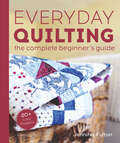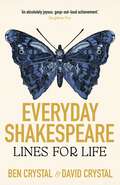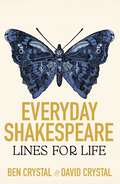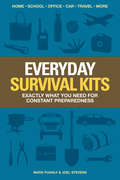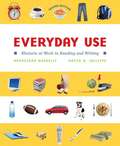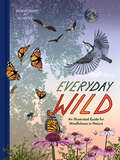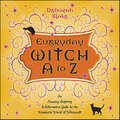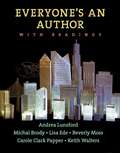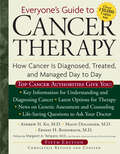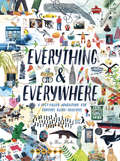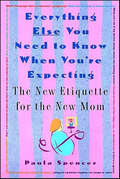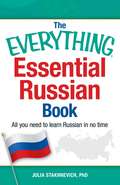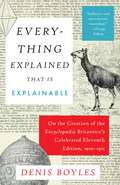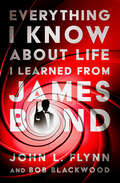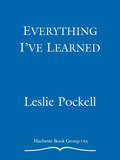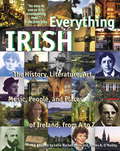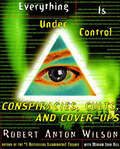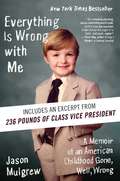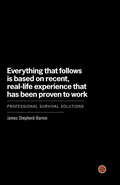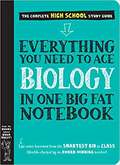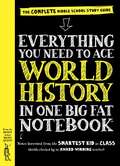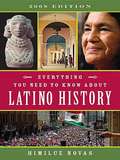- Table View
- List View
Everyday Quilting: The Complete Beginner's Guide to 15 Fun Projects
by Jennifer FultonLearn how to quilt today!Whether you want to make a functional quilt or one you can hang on a wall in your home for family and friends to admire, this book is the singular resource you need. Filled with step-by-step techniques ideal for beginners as well as aspirational designs for even the most experienced quilter, Everyday Quilting lives up to its name with patterns for all seasons. With more than 300 full-color photos, more than 20 projects, and expert quilting directions, this guide to quilting will help ensure you not only become a successful quilter but also become one that maintains a quilting practice. Even the tutorial pages offer inspiration to would-be and dedicated quilters, confirming your skills while also encouraging them. Everyday Quilting also includes these features:• Instructions for machine and hand sewing• Tips for selecting and preparing fabric• Basic and advanced sewing techniques• Appliqué techniques and tips• Detailed directions for making quilts
Everyday Shakespeare: Lines for Life
by David Crystal Ben CrystalShakespeare had an ear and hand that was able to capture our everyday thoughts and emotions, pin them to a page, and express them so well that still today they can make us feel stunned to be seen.'Better three hours too soon than a minute too late.''Make not your thoughts your prisons.''Wisely and slow. They stumble that run fast.''And I have heard it said, unbidden guests are often welcomest when they're gone.' With a quote for every day of the year, this beautiful book gathers the finest lines from the lesser-known corners of Shakespeare's plays and poems. While you may not be familiar with these 400-year-old phrases, you will be surprised by the immediate, easy resonance they have with modern day-to-day life and, hopefully, inspired to learn a few quotes, say them out loud, and drop them into conversation.Each page bears a gift of Shakespearean delight - around which lies a treasure trove of trivia, miscellaneous fact, and opportunities for reflection. The Crystals - son and father - draw attention to points of daily life, literary, linguistic, and theatrical interest through their entertaining commentary. They offer notes of context for anyone who wants to know who originally said the words, in which play, and why. And finally, the authors provide three indexes, allowing readers to help find the right quote for a task, or to follow-up on a quote's original source.Shakespeare's words are a mirror for us to peer into, to see if any part of ourselves, familiar or strange, is visible. Each day as you read his lines, you'll get glimpses of loves you've known, jealousies you've felt, relationships you've had, and situations you've encountered that bring a smile - or a wince - of familiarity.Everyday Shakespeare shares the simple lines that encapsulate the wondrous complexity of life, and the enduring appeal of the Bard.Shakespeare was not of an age, but for all time. - Ben Jonson
Everyday Shakespeare: Lines for Life
by David Crystal Ben CrystalShakespeare had an ear and hand that was able to capture our everyday thoughts and emotions, pin them to a page, and express them so well that still today they can make us feel stunned to be seen.'Better three hours too soon than a minute too late.''Make not your thoughts your prisons.''Wisely and slow. They stumble that run fast.''And I have heard it said, unbidden guests are often welcomest when they're gone.' With a quote for every day of the year, this beautiful book gathers the finest lines from the lesser-known corners of Shakespeare's plays and poems. While you may not be familiar with these 400-year-old phrases, you will be surprised by the immediate, easy resonance they have with modern day-to-day life and, hopefully, inspired to learn a few quotes, say them out loud, and drop them into conversation.Each page bears a gift of Shakespearean delight - around which lies a treasure trove of trivia, miscellaneous fact, and opportunities for reflection. The Crystals - son and father - draw attention to points of daily life, literary, linguistic, and theatrical interest through their entertaining commentary. They offer notes of context for anyone who wants to know who originally said the words, in which play, and why. And finally, the authors provide three indexes, allowing readers to help find the right quote for a task, or to follow-up on a quote's original source.Shakespeare's words are a mirror for us to peer into, to see if any part of ourselves, familiar or strange, is visible. Each day as you read his lines, you'll get glimpses of loves you've known, jealousies you've felt, relationships you've had, and situations you've encountered that bring a smile - or a wince - of familiarity.Everyday Shakespeare shares the simple lines that encapsulate the wondrous complexity of life, and the enduring appeal of the Bard.Shakespeare was not of an age, but for all time. - Ben Jonson
Everyday Shakespeare: Lines for Life
by David Crystal Ben CrystalAn absolutely joyous, gasp-out-loud achievement. - Stephen FryA cathedral of consciousness - Shakespeare's uncanny insight into human nature finds us, unearthed here. - LionHeart, artist, poet, and BBC Radio London presenterShakespeare had an ear and hand that was able to capture our everyday thoughts and emotions, pin them to a page, and express them so well that still today they can make us feel stunned to be seen.'Better three hours too soon than a minute too late.''Make not your thoughts your prisons.''Wisely and slow. They stumble that run fast.''And I have heard it said, unbidden guests are often welcomest when they're gone.' With a quote for every day of the year, this beautiful book gathers the finest lines from the lesser-known corners of Shakespeare's plays and poems. While you may not be familiar with these 400-year-old phrases, you will be surprised by the immediate, easy resonance they have with modern day-to-day life and, hopefully, inspired to learn a few quotes, say them out loud, and drop them into conversation.This audio edition is read by David, Ben and Hilary Crystal. Each quote is provided in standard British English, and then again in original pronunciation (OP), as it would have been spoken when it was first performed in the 1600s. The original pronunciation provides insight into the rhyming structure of some lines that are lost in modern pronunciation, as well as highlighting the similarities OP has to other varieties of English, notably the american 'ar' sound. The Crystals also draw attention to points of daily life, literary, linguistic, and theatrical interest through their entertaining commentary. They offer notes of context for anyone who wants to know who originally said the words, in which play, and why. Shakespeare's words are a mirror for us to peer into, to see if any part of ourselves, familiar or strange, is visible. Each day as you read his lines, you'll get glimpses of loves you've known, jealousies you've felt, relationships you've had, and situations you've encountered that bring a smile - or a wince - of familiarity.Everyday Shakespeare shares the simple lines that encapsulate the wondrous complexity of life, and the enduring appeal of the Bard.Shakespeare was not of an age, but for all time. - Ben Jonson
Everyday Survival Kits: Exactly What You Need for Constant Preparedness
by Joel Stevens Mark PuhalyBe Prepared to Survive Everyday Emergencies! The keys to your everyday survival are: situational awareness, knowledge, and practiced preparedness skills. Sure, it's important to have trustworthy survival gear, but possessing the mindset that you are prepared for anything, and that you will survive no matter what happens, is your secret weapon that will help you to stay alive in an emergency. Everyday Survival Kits contains clearly outlined packing lists for what you need for specific survival situations. A situation will arise when you'll require more than just a bug out bag or a get home bag--with the help of this guide you'll be prepared to stay alive. Inside you'll find: detailed packing lists for a variety of kits including: everyday carry, hip bag, pocket survival kit, emergency 72-hour bag, urban survival bag, day hike kit, emergency car kit, vacation kit, student kit, purse kit, extreme weather kit, maritime kit, and the ultimate bug out bag practical applications and detailed instructions of how to use each item in the kit a resources section to take the guesswork out of finding and buying the right gear for the kit non-branded gear recommendations so you can select gear that fits both your need and your budget real-world scenarios in which the kits will be useful The only person you can fully rely on in a survival situation is you. The more you think about possible emergencies now, and prepare for them before they happen, the more likely you are to survive. The future belongs to those who are prepared, so be ready.
Everyday Use: Rhetoric at Work in Reading and Writing (2nd Edition)
by David A. Jolliffe Hephzibah RoskellyBrief and accessible, this rhetoric teaches students to read closely, critically, and rhetorically, and to write effectively to achieve their rhetorical goals. Everyday Use answers the basic question, "What is rhetoric?" It shows rhetoric as set of activities-reading, writing, speaking, listening-that all intellectually engaged people participate in every day. And it shows that a knowledge of rhetoric is essential in understanding how written and spoken texts influence thought and action every day, in private and in public forums, for good or ill. By demystifying rhetoric and rescuing it from common public misconceptions,Everyday Use equips students to be effective communicators in the academic world and in everyday life.
Everyday Use: Rhetoric at Work in Reading and Writing (AP Edition)
by David A. Jolliffe Hephzibah RoskellyEveryday Use: Rhetoric at Work in Reading and Writing is designed specifically for use in Advanced Placement English courses that try to achieve these goals. In six chapters and a series of interchapters, this book provides a foundation for reading insightfully and writing effectively and strives to teach students how to produce their own texts that are rich, purposeful, and effectively crafted.
Everyday Wild: An Illustrated Guide for Mindfulness in Nature
by Kathryn Hunter Bo HunterA colorful, charming, and immersive guide to exploring and treasuring the complex, miraculous natural world in your own backyard and beyond.Everyday Wild is an illustrated celebration of the vast natural diversity of the world, one that you can find by simply stepping outside. This guide to backyard (or front stoop!) ecology encourages you to notice every sight, sound, and smell—the rustle of falling leaves, the chirping of crickets, the scent of spring rain, and the radiance of the stars above—as a way of understanding the wonders of our complex, beautiful planet.Interact mindfully with your surroundings and embrace the simple joys offered by the great outdoors while gleaning tidbits of scientific information written to teach and inspire all ages. Each chapter—teeming with gorgeous, intricate nature illustrations—begins with a mindfulness prompt like "Notice the Small Things," "Taste the Wild," or "Discover Patterns," encouraging curiosity about the call-and-response interactions between birds or what a cloud can tell us about the future. Learn about foraging, sacred geometry, moon phases, animal tracks, clouds, weather, and more.As you leaf through Everyday Wild, you will find your understanding of nature's everyday feats expanding. Let wonder and curiosity bloom as you embark on this illustrated journey of the outdoors.
Everyday Witch A to Z: An Amusing, Inspiring & Informative Guide to the Wonderful World of Witchcraft
by Deborah BlakeBreak out your broomstick, and add a spark of magick to every day with this serious and silly, factual and the fanciful encyclopedia of witchcraft. Do stuffy academic tomes on Witchcraft make you want to hide in your broom closet or cast a boredom-banishing spell? Now you can get the low-down on everything you ever wondered about Witchcraft, and it's as simple as A, B, C—sprinkled throughout with humor, flair, and a healthy dose of Witchy wisdom. Unique and fun for everyone, Everyday Witch A to Z invites you to dip into a delightful medley of magickal essentials. Whether you're just setting out on the path or looking to add extra zest to your practice, this friendly book on Witchcraft is for you. From creating and casting spells to working with stones and herbs, you will learn how magick works, what Witches do, and how you can incorporate Witchcraft into your daily life. Even Magic the Cat, the author&’s magickal familiar, lends a playful paw with spells and wise words of her own!
Everyone's An Author (With Readings)
by Lisa Ede Andrea A. Lunsford Keith Walters Beverly J. Moss Michal Brody Carole Clark PapperEveryone's an Author focuses on writing as it really is today--with words, images, and sounds, in print and online--and encourages students to see the connections between their everyday writing and academic writing. It covers the genres college students need to learn to write--and teaches them to do so across media. It bridges the gap between Facebook and academic writing, showing how the strategies students use instinctively in social media can inform their academic writing. And it provides a strong rhetorical framework that guides students in the decisions they need to make as authors today. The version with readings includes an anthology of 35 readings.
Everyone's Guide to Cancer Therapy: How Cancer Is Diagnosed, Treated, and Managed Day to Day
by Andrew Ko Malin Dollinger Ernest H. Rosenbaum&“Written by two oncologists . . . this authoritative but readable reference stands out . . . as a uniquely comprehensive, thorough source of up-to-date information&” (Library Journal). For more than thirty years, Everyone&’s Guide to Cancer Therapy has been the definitive resource for anyone confronting a cancer diagnosis. The revised and updated fifth edition draws on the latest research, information, and advice from more than 100 top oncology specialists. Equally informative and accessible, this comprehensive book helps cancer patients and their caregivers navigate through diagnosis, treatment, and supportive care. Topics include: * Information on recently approved targeted therapies for various cancer types * The newest strategies in cancer diagnosis and prevention * Cancer biology: translating scientific discoveries into meaningful advances for patients * Supportive care and complementary approaches
Everything & Everywhere: A Fact-Filled Adventure for Curious Globe-Trotters
by Marc MartinFrom Hong Kong to Reykjavík, Ulaanbaatar to New York City, enjoy a lush and unexpected journey around the world to discover what makes each place unique. Sleepy sloths, colorful cows, staggering skylines, terrible traffic—countless surprises await! All you need is a good guide and a little curiosity . . . so, what are you waiting for? Let's go! From award-winning author and illustrator Marc Martin comes a quirky, fact-filled adventure for curious globe-trotters, young and old.
Everything But the Kitchen Sink: What Every Modern Woman Needs to Know
by Francesca BeaumanTwenty-first-century women are called upon to perform any manner of tasks, recall even the most random bits of information, and all the while carry on a charming conversation. Thankfully, from historian and British television personality Francesca Beauman comes this indispensable and authoritative survival guide that will allow women to tackle any problem and work any party with ease, style, and grace. Everything But the Kitchen Sink is a compendium of delightfully witty facts, figures, diagrams, lists, charts, quotes, and practical advice. True, you may not ever need to know how to roast a hedgehog, treat a shark bite, or say "No, thank you. Please leave me alone" in Russian. But isn't it good to know you can?
Everything Else You Need to Know When You're Expecting: The New Etiquette for the New Mom
by Paula SpencerCan you ask your friends to do your baby's laundry? When should you tell your boss you're pregnant? How do you let your mother-in-law know that you're not naming the baby after her? And what if your water breaks in public? Everything Else You Need to Know When You're Expecting is the complete guide to the old and new customs, traditions and etiquette for expectant and new parents, and those who love them. After years of both professional and first-hand experience, Paula Spencer has compiled the answers to those questions every woman asks herself as soon as she knows she's expecting. Topics include Pregnancy at Work, Handling Busybodies, and Tricky issues (such as the all-too-common anxiety about starting labor in a crowd--or an elevator). There are also detailed explorations of such classic concrns as Naming, birth announcements and shower gifts.
Everything Essential Russian Book
by Julia StakhnevichA Simon & Schuster eBook. Simon & Schuster has a great book for every reader.
Everything Explained That Is Explainable: On the Creation of the Encyclopaedia Britannica's Celebrated Eleventh Edition, 1910-1911
by Denis BoylesThe publication of the Eleventh Edition of the Encyclopædia Britannica in 1911 marked the last stand of the Enlightenment and a turbulent end to an era. The Eleventh Edition summed up the high point of optimism and belief in human progress that dominated Anglo-Saxon thought from the time of the Enlightenment. Eagerly embraced by hundreds of thousands of middle-class Americans, the Eleventh Edition was read as a twenty-nine-volume anthology of some of the best essays written in English. Among the names of those who contributed to its volumes: T. H. Huxley, Algernon Swinburne, Bertrand Russell; it was the work of 1,500 eminent contributors and was edited by Hugh Chisholm, charismatic star editor. The Britannica combined scholarship and readability in a way no previous encyclopedia had or ever has again. Within less than a decade after its publication, the Edwardian worldview was at an end: the "unsinkable" White Star Titanic had sunk on its maiden voyage; Archduke Franz Ferdinand was assassinated and the Great War had begun. In Everything Explained That Is Explainable, Denis Boyles tells the audacious, improbable story of twentieth-century American hucksterism and vision that resurrected a dying Encyclopædia Britannica by means of a floundering London Times, and writes of how its astonishing success changed publishing and produced the Britannica's Eleventh Edition, still the most revered--all 44 million words--of English-language encyclopedias, considered by many to be the last great work of the age of reason.The author writes of the man whose inspiration it was: Horace Everett Hooper, American entrepreneur who stumbled into the book business at sixteen on a hunch that he could make money selling inexpensive editions of classics by direct mail to isolated settlers scattered across the American West. Hooper found an outdated set of reference books gathering dust in a warehouse, bought them for almost nothing, repackaged them, and sold them on credit as "one-shelf libraries" to farmers concerned about their children's education in frontier schools; his Western Book and Stationery Company became one of the largest publishers in the Midwest, sending books directly to readers, bypassing traditional booksellers, and inventing a model that was forever after emulated . . . Boyles writes that Hooper and his partner, Henry Haxton, a former Hearst reporter and ingenious adman, came across the Encyclopædia Britannica, published by Adam & Charles Black, whose Ninth Edition's final volume, published in 1890, was seen by many as the height of English intellectual achievement. The Ninth had everything an encyclopedia needed. Except readers. Hooper and Haxton came up with a new market for the encyclopedia's next two editions, which they planned to produce, and approached the then-struggling London Times, which became their publishing partner.Boyles tells the outlandish, bumpy tale of the making of the Eleventh; of the young staff of university graduates working with fanatical conviction (40,000 entries by 1,500-odd contributors), scattered around the globe . . . more than 200 members of the Royal Society or fellows of the British Academy; diplomats; government officials; officers of learned societies . . . contributions by the most admired writers, thinkers, and scientists of the day; of their scheme to sell the Eleventh Edition and of the storm that erupted around its publication--and after.An extraordinary tale of American know-how, enterprise, and spirit.From the Hardcover edition.
Everything I Know About Life I Learned From James Bond
by John L. Flynn Bob BlackwoodCelebrate the heroic swagger of Agent 007 with the ultimate fan&’s guide to all things James Bond.For millions of American men who grew up in the 1950s and 60s, James Bond was the ultimate masculine icon. He was stylish, smart, and sophisticated. He was ready for adventure, unafraid of danger, and irresistible to women. In short, he was everything his young male fans wanted to be. In this volume, authors Bob Blackwood and John L. Flynn think back on the importance of James Bond in their lives, and the lessons they learned from his movies and novels. Covering everything from cars and clothes to how to order a martini, this is a loving celebration of the man they call &“Bond, James Bond.&”
Everything I've Learned: 100 Great Principles to Live by
by Leslie Pockell Adrienne AvilaSure to inspire and enlighten, this handy volume of 100 great principles to live by is a revelation at any age, but an especially great graduation present. Not your typical lackluster--and might we add heavy--book of quotes, Everything I've Learned is a practical volume rich in words to live by: words that are sometimes quirky, definitely wise, and always right on target. Readers will learn from such luminaries as Theodore Roosevelt, John Wayne, Joan Baez, and even the prolific Anonymous, and realize that life is about seizing the day, living in the moment, and being true to oneself. Divided into eight categories, the principles here include such practical wisdom as "Always do sober what you said you'd do drunk. That will teach you to keep your mouth shut" (Ernest Hemingway) and familiar, but time-tested, words to live by like "Know thyself" (The Delphic Oracle).
Everything Irish: The History, Literature, Art, Music, People, and Places of Ireland from A to Z
by Lelia Ruckenstein James A. O'MalleyHere, in one complete volume, is the depth and breadth of the great island nation and its people represented in an easily browsed, friendly format. From the Abbey Theatre to the Dublin storyteller Zozimus; from the origin of the Troubles to the origin of the limerick; from the stunning beauty of Connemara to the shattering tragedy of Bloody Sunday; from the greatest writers of the English language to the "confrontational television" of Gay Byrne's The Late Late Show-every aspect of Irish culture, geography, and history is collected and annotated in more than 900 entries from A to Z. Readers will encounter heroes and terrorists, poets and politicians, all of Ireland's counties, ancient myths, and pivotal events--all expertly and succinctly described and explained. With entries written by some of the world's leading authorities on Ireland,Everything Irish is perfect for everyone, from the inquiring reader to the serious student. You can spend a few minutes learning about the much-maligned Travelers and then move on to the equally contentious (in its time) medieval tithe. Visit the majestic Cliffs of Moher and then delve into an analysis of paramilitary groups like the Irish Republican Army and the Ulster Volunteer Force. Explore the ruins of a Romanesque castle or experience the piercing light of the winter solstice inside prehistoric Newgrange, a passage grave older than the pyramids. Across centuries and across counties, the rich landscape of Irish life and heritage springs to life in these pages. An indispensable source of fascinating information and captivating anecdote, this is one book that will never be far from the hands of those with curious minds or an adventurous spirit.
Everything Is Under Control: Conspiracies, Cults, and Cover-ups
by Robert Anton Wilson Miriam Joan HillEverything Is under Control is Wilson's -to-Z of conspiracy theories-real, half-real and completely imaginary. Highly cross-referenced and written in a journalistic tone, it ioncludes fascinating information on Area 51, the Bermuda Triangle, Naom Chomsky, Crying of Lot 49, "Bob" Dobbs, Elders of Zion, the federal reserve, Holocaust deniers, Iran-Contra, JFK, Knights Templar, McCarthy, Norplant, Operation Mind Control, Pearl Harbor, UFO Abductiion, Wicca, and more.
Everything Is Wrong with Me
by Jason MulgrewA memoir of startling insight, divine comedy, and irreversible, unconscionable stupidity Fans of Jason Mulgrew's wildly popular blog know that everything really is wrong with him. The product of a raucous, not-just-semi-but-fully-dysfunctional Philadelphia family, Jason has seen it all-from Little League games of unspeakable horror to citywide parades ending in stab wounds; from hard-partying longshoremen fathers to feathered-hair, no-nonsense, kindhearted mothers; and from conscience-crippling Catholic dogmas to the equally confounding religion of women. With chapter titles like "My Bird: Inadequacy and Redemption" (no, he is not referring to a parakeet) and "On the Relationship Between Genetics and Hustling," Everything Is Wrong with Me proves that, as Jason puts it, "writing is a fantastical exercise in manic depression"-but he never fails to ensure that laughter is part of the routine. With echoes of Jean Shepherd transplanted to Philly in the eighties and nineties, this book is a must-read for every person who looks back wistfully on his or her childhood and family and wonders, "What were we thinking?"
Everything That Follows Is Based on Recent, Real-Life Experience That Has Been Proven to Work
by James Shepherd-Barron"In the course of my work I have built an airstrip in Burundi, helped deliver a baby to a Rwandan refugee on a Congolese roadside, navigated to safety when lost in the deserts of Chad, taken cover from ricocheting bullets in Baghdad and negotiated with rebel warlords in Darfur. I hope you don't have to do the same. But if things get dangerous, this guide will help you--and those with you--to survive." International aid worker James Shepherd-Barron has faced countless life-threatening situations around the world. Everything that Follows draws upon his decades of experience to offer usable advice--as practical as it is pulse-pumping--on surviving the most dangerous places on earth. Facing down a rabid dog? Under threat of chemical attack? Needing urgently to know how to fire an AK-47? This book--crammed with easy-to-use illustrations, packing lists, useful phrases, and real-life anecdotes--provides expert advice on how to make it through. Whether you're about to go on a trip overseas, or just want to know what to do when the going gets tough, this guide will help you survive.From the Trade Paperback edition.
Everything You Need To Ace Biology In One Big Fat Notebook (Big Fat Notebook)
by Matthew Brown Workman PublishingThis Big Fat Notebook covers everything you need to know during a year of high school BIOLOGY class, breaking down one big bad subject into accessible units. Including: biological classification, cell theory, photosynthesis, bacteria, viruses, mold, fungi, the human body, plant and animal reproduction, DNA & RNA, evolution, genetic engineering, the ecosystem and more. Study better with mnemonic devices, definitions, diagrams, educational doodles, and quizzes to recap it all.
Everything You Need to Ace World History in One Big Fat Notebook: The Complete Middle School Study Guide (Big Fat Notebooks)
by Ximena Vengoechea Michael LindbladEverything You Need to Ace World History . . . kicks off with the Paleolithic Era and transports the reader to ancient civilizations--from Africa and beyond; the middle ages across the world; the Renaissance; the age of exploration and colonialism, revolutions, and the modern world and the wars and movements that shaped it. <p><p> The BIG FAT NOTEBOOKS meet Common Core State Standards, Next Generation Science Standards, and state history standards, and are vetted by National and State Teacher of the Year Award–winning teachers. They make learning fun, and are the perfect next step for every kid who grew up on Brain Quest.
Everything You Need to Know About Latino History
by Himilce NovasThe popular primer to Latino life and culture?updated for 2008 Latinos represent the fastest-growing ethnic population in the United States. In an accessible and entertaining question-and-answer format, this completely revised 2008 edition provides the most current perspective on Latino history in the making, including: ? New Mexico governor Bill Richardson?s announced candidacy for the 2008 presidential election ? Ugly Betty?the hit ABC TV show based on the Latino telenovela phenomenon ? The number of Latino players in Major League baseball surpassing the 25 percent mark ? Immigration legislation and the battle over the Mexican border ? The state of Castro?s health and what it means for Cuba More than ever, this concise yet comprehensive reference guide is the ideal introduction to the vast and varied history and culture of this multifaceted ethnic group. .
